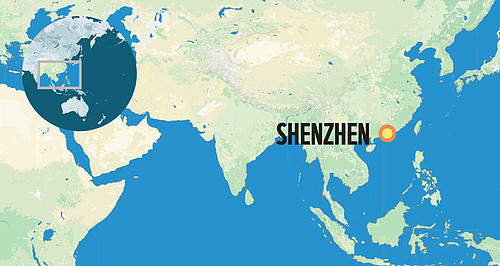The WWF is run at a local level by the following offices...
- WWF Global
- Adria
- Argentina
- Armenia
- AsiaPacific
- Australia
- Austria
- Azerbaijan
- Belgium
- Bhutan
- Bolivia
- Borneo
- Brazil
- Bulgaria
- Cambodia
- Cameroon
- Canada
- Caucasus
- Central African Republic
- Central America
- Central Asia
- Chile
- China
- Colombia
- Croatia
- Democratic Republic of the Congo
- Denmark
- Ecuador
- European Policy Office
- Finland
SHENZHEN

Transit-Oriented Development – An essential planning tool
To make a difference, Shenzhen’s leaders have taken the hardest but most effective measure available to them – ensuring sustainable development is integrated in the city plans and planning codes. Specifically, they have opted for what is called Transit-Oriented Development (TOD), that prioritises and designs activity around public transport infrastructure. Shenzhen has pioneered TOD while using four techniques to achieve maximum effect: innovative financing, integrated planning, flexible zoning, stakeholder dialogue.
Innovative financing methods involve a creative allocation of risks and responsibilities among the various stakeholders, including the city, other landowners, property developers and infrastructure actors. It’s well known that land around public transport hubs becomes more valuable, and thus property developers and landowners, given suitable guarantees, have incentives to participate in TOD initiatives.
Planning and zoning are often rigid and one dimensional, but Shenzhen has understood that good transit planning, integrated into the development concept of each area, has economic and social benefits. This has been supplemented with fine-grained (floorwise) zoning that enables precise and creative solutions. Capping it all is a process of multi-sector engagement, that ensures private sector, public actors, and social actors contribute to shared goal setting, problem solving and implementation.
Zero pollution transportation
Technologically, Shenzhen is matching its infrastructural ambitions with a fast, large-scale and local-industry-focussed initiative to move entirely to electric buses in 2017. Not only that, across all categories of vehicles, including logistics, rental vehicles, taxis, and private cars, the city is implementing regulations, incentives and support measures which enable the rapid shift to low-low carbon, zero-pollution transportation. In the coming year, more than 130,000 charging posts, for buses and cars, will appear across the city, to support the rise in electric vehicles, and the city is regulating all new parking space to ensure that charging posts are supplied.


China's global example of low-carbon city development
More compelling even than its transport breakthroughs are Shenzhen's achievements in urban development on a low-carbon model. Since 2008, a concept has evolved in the global policy debate at national and municipal level of Low Carbon Cities. China has grasped the concept ambitiously, and filtered it through national level political framing, by means of a mandate from the National Development and Reform Commission, which gives it the Low Carbon City concept more force – and finance – when it reaches the municipal level. Shenzhen is by far the most successful model in China of a low carbon city.
The Low Carbon City approach is implemented in Shenzhen with a number of priority features including sophisticated spatial planning to help eliminate car-oriented zoning and sprawl, and promote density and multi-use urban fabric; delineation of ecological baselines and maintenance of green spaces to benchmark environmental protection and sequester carbon; and the prioritisation of urban renewal to complement new build.
These framing features are driven by a world beating focus on both administrative leadership, and citizenship awareness. This is not mere lip-service: if administrators at every level in Shenzhen are not able to demonstrate performance contributions to the low-carbon project, their career progress is systematically stifled. The target for citizenship buy-in to the low-carbon mission is 90% by 2020 – which is hardly matched anywhere in the world, at any level of economic development.
The jewel in the low-carbon policy crown in Shenzhen is the municipal level application of a cap-and-trade carbon emissions trading regime. Cap-and-trade, by its nature, is not just a market mechanism for efficient reduction of pollution, it is a collaboration tool, since in effect, it is essentially a project of shared risk, responsibility and reward.
According to the city’s own data, the reductions in carbon, from the 635 industries large enough to be included in the emissions trading regime, amounted to 35% in 2015 from a 2010 baseline, which is a huge step by any standards, let alone in the context of a rapidly growing and industrialising region.
Want to know more about Urban solutions?
Contact Barbara Evaeus
Global Communications Manager,
WWF One Planet City Challenge
+46 70 393 9030
barbara.evaeus@wwf.se
Text by: John Manoochehri
Last edited: 2017-03-15


